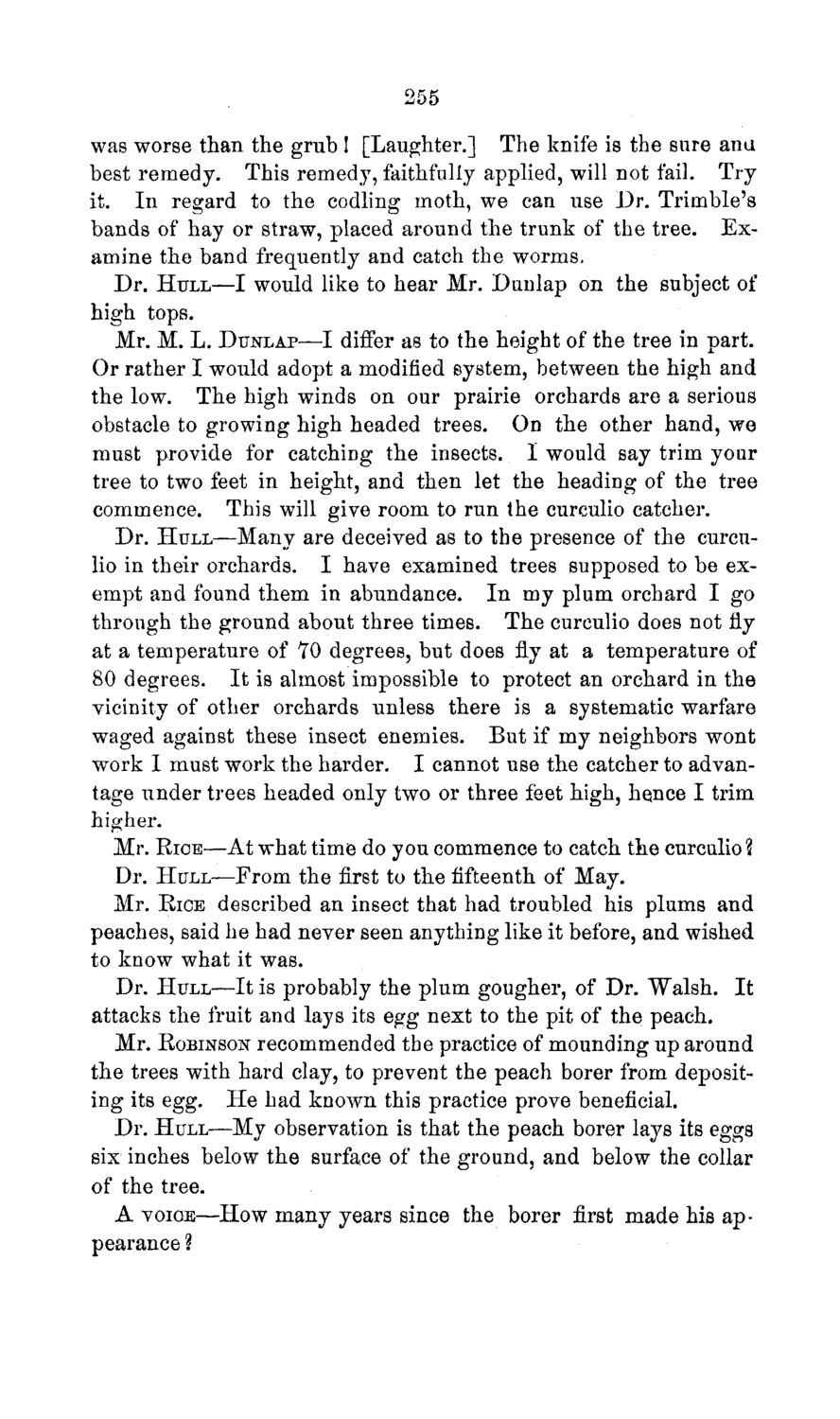| |
| |
Caption: Board of Trustees Minutes - 1869
This is a reduced-resolution page image for fast online browsing.

EXTRACTED TEXT FROM PAGE:
255 was worse than the grub ! [Laughter.] The knife is the sure ana best remedy. This remedy, faithfully applied, will not fail. Try it. In regard to the codling moth, we can use Dr. Trimble's bands of hay or straw, placed around the trunk of the tree. Examine the band frequently and catch the worms, Dr. H U L L — I would like to hear Mr. Dunlap on the subject of high tops. Mr. M. L. DUNLAP—I differ as to the height of the tree in part. Or rather I would adopt a modified system, between the high and the low. The high winds on our prairie orchards are a serious obstacle to growing high headed trees. On the other hand, we must provide for catching the insects. I would say trim your tree to two feet in height, and then let the heading of the tree commence. This will give room to run the curculio catcher. Dr. HULL—Many are deceived as to the presence of the curculio in their orchards. I have examined trees supposed to be exempt and found them in abundance. I n my plum orchard I go through the ground about three times. The curculio does not fly at a temperature of 70 degrees, but does fly at a temperature of 80 degrees. It is almost impossible to protect an orchard in the vicinity of other orchards unless there is a systematic warfare waged against these insect enemies. But if my neighbors wont work I must work the harder. I cannot use the catcher to advantage under trees headed only two or three feet high, hqnce I trim higher. Mr. EICE—At what time do you commence to catch the curculio? Dr. HULL—From the first to the fifteenth of May. Mr. EICE described an insect that had troubled his plums and peaches, said he had never seen anything like it before, and wished to know what it was. Dr. HULL—It is probably the plum gougher, of Dr. Walsh. It attacks the fruit and lays its egg next to the pit of the peach. Mr. ROBINSON recommended the practice of mounding up around the trees with hard clay, to prevent the peach borer from depositing its egg. He had known this practice prove beneficial. Dr. HULL—My observation is that the peach borer lays its eggs six inches below the surface of the ground, and below the collar of the tree. A VOICE—How many years since the borer first made his appearance ?
| |